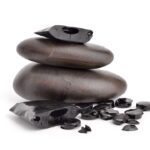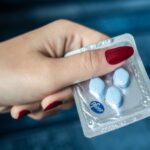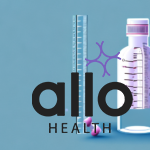Using Lignocaine Hydrochloride Gel for Pain Relief

Allo Health is dedicated to personalized well-being, offering support and trusted information tailored to individual health goals. The platform emphasizes human-generated content, led by a distinguished medical team of experts, including physicians and sexual health specialists. Their commitment to credibility involves rigorous fact-checking, authoritative research, and continuous updates to ensure accurate, up-to-date information. Allo Health's unique approach goes beyond conventional platforms, providing expert-led insights and a continuous commitment to excellence, with user feedback playing a crucial role in shaping the platform's authoritative voice.

Dr.Sushma.V completed MBBS degree from BGS GIMS,bangalore
Why This Was Upated?
Our experts continually monitor the health and wellness space, and we update our articles when new information became available.
Updated on 04 April, 2024
- Article was updated as part of our commitment to diversity, equity, and inclusion.
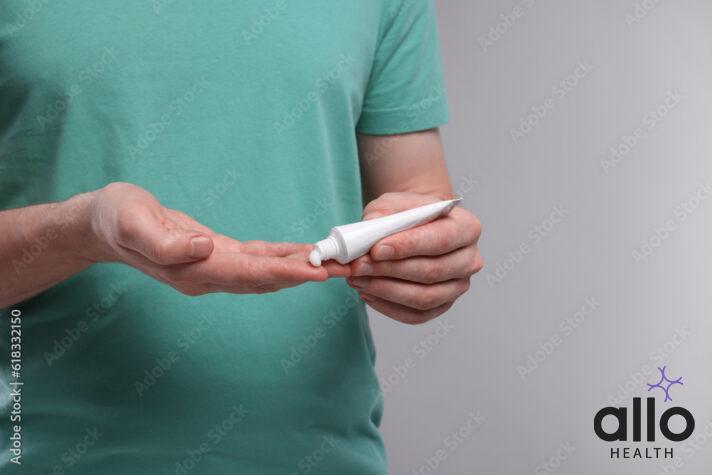
"The following blog article provides general information and insights on various topics. However, it is important to note that the information presented is not intended as professional advice in any specific field or area. The content of this blog is for general educational and informational purposes only.
Book consultation
The content should not be interpreted as endorsement, recommendation, or guarantee of any product, service, or information mentioned. Readers are solely responsible for the decisions and actions they take based on the information provided in this blog. It is essential to exercise individual judgment, critical thinking, and personal responsibility when applying or implementing any information or suggestions discussed in the blog."
Lignocaine hydrochloride gel, commonly known as lidocaine hydrochloride gel, is a topical analgesic that has gained popularity for its efficient pain-relieving properties. Derived from the amide class of anesthetics, this gel works by blocking pain signals from the nerves, providing targeted relief for various painful conditions.
In this article, we will explore the uses, benefits, and precautions of lignocaine hydrochloride gel as a medical advice for pain relief, highlighting its role in treating mouth ulcers, painful inflammation, and more.
Understanding the Pathway of Pain Signals
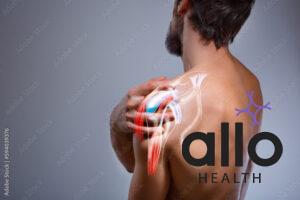
Painful sensations in the human body are perceived through the stimulation of pain receptors along nerve fibers known as peripheral nerves. When an injury or inflammation occurs, electrical signals build along these nerves, transmitting pain messages to the brain. The brain processes these signals, causing the perception of pain. Lignocaine hydrochloride gel disrupts this pathway by numbing the application site, thereby preventing the transmission of pain signals to the brain.
What is Lignocaine Hydrochloride Gel And Its Working Mechanism?
Lignocaine hydrochloride gel, also known as lidocaine hydrochloride gel, is a topical local anesthetic that provides pain relief by numbing the area of application. Its working mechanism involves blocking the transmission of pain signals along nerve fibers, which prevents the brain from perceiving pain in the localized region.
The working mechanism of lignocaine hydrochloride gel can be broken down into the following steps:
Inhibition of Pain Signals: When applied to the skin or mucous membranes, the gel gets absorbed into the tissues, where it acts on the nerve endings responsible for transmitting pain signals. It specifically targets sodium channels, which are essential for the transmission of electrical signals along nerve fibers.
Blocking Sodium Channels: According to medical research, Lignocaine hydrochloride interferes with the opening and closing of sodium channels, which are responsible for carrying the electrical impulses along nerve fibers. By blocking these channels, it prevents the influx of sodium ions, which disrupts the electrical signals required for the transmission of pain sensations to the brain.
Numbing Effect: As a result of the blocked pain signals, the area of application becomes desensitized, leading to a temporary numbing effect. This numbing effect effectively reduces or eliminates the sensation of pain, providing relief for various painful conditions.
Duration of Action: The duration of action of lignocaine hydrochloride gel depends on several factors, including the concentration of the gel, the thickness of the skin or mucous membranes, and the individual’s response to the medication. Generally, the analgesic effect lasts for a limited duration, making it suitable for short-term pain relief or during minor medical procedures.
It is important to note that lignocaine hydrochloride gel is intended for topical use only and should not be ingested or used on broken skin without medical supervision.
Additionally, overuse or application to a large area of the body can lead to systemic absorption, which may result in unwanted side effects or toxicity. Always follow the instructions provided by healthcare professionals or the product’s label for safe and effective use of lignocaine hydrochloride gel.
Uses And Benefits of Lignocaine Hydrochloride Gel
Lignocaine Hydrochloride gel is typically used for alleviating discomfort associated with dental pain, mouth ulcers, lesions etc. It is also used for relieving inflammation, skin irritation and other dermatological conditions and also certain medical procedures including vaccination, blood draws etc.
Pain Relief: Lignocaine gel is widely used for its analgesic properties in managing pain associated with minor injuries, burns, insect bites, and post-surgical wounds. By numbing the nerves in the affected area, it reduces the sensation of pain, providing temporary relief.
Dental Procedures: Dentists often use lignocaine gel to numb the gums before administering injections or performing minor dental procedures. It helps alleviate the discomfort associated with dental treatments.
Mouth Ulcers and Oral Lesions: Lignocaine gel is used to ease the pain and itchiness caused by mouth ulcers and other oral lesions. Its numbing effect provides relief and allows the affected area to heal.
Dermatological Conditions: In dermatology, lignocaine gel can be used to manage skin conditions that cause localized pain and inflammation, such as rashes, irritations, and minor skin injuries.
Medical Procedures: Before certain medical procedures, such as vaccinations, blood draws, or the insertion of medical equipment, lignocaine gel is applied to the skin to minimize discomfort during the process.
Benefits of Lignocaine Hydrochloride Gel
Rapid Onset of Action: Lignocaine gel starts working relatively quickly after application, providing fast-acting pain relief to the targeted area.
Easy Application: The gel formulation allows for easy and precise application to the affected area, ensuring optimal pain relief.
Targeted Pain Relief: Lignocaine gel specifically targets the nerves at the application site, minimizing systemic absorption and reducing the risk of side effects compared to oral medications.
Temporary Effect: The analgesic effect of lignocaine gel is temporary, making it suitable for short-term pain relief needs and minor medical procedures.
What Types of Pain Can Be Treated with Lignocaine Hydrochloride Gel?
Lignocaine hydrochloride gel is effective in providing pain relief for the following conditions:
Minor Injuries: Lignocaine gel can be applied to small cuts, scrapes, and abrasions to reduce pain and discomfort during the healing process.
Burns: For minor burns, lignocaine gel can help alleviate the pain and inflammation associated with the injury.
Insect Bites and Stings: Applying lignocaine gel to insect bites or stings can provide quick relief from itching and pain.
Post-Surgical Pain: After certain surgical procedures, lignocaine gel can be used to manage pain at the incision site.
Dental Pain: Dentists often use lignocaine gel to numb the gums before administering injections or performing minor dental procedures, such as filling cavities.
Mouth Ulcers and Oral Lesions: Lignocaine gel can be applied inside the mouth to ease the pain and discomfort caused by mouth ulcers, canker sores, or other oral lesions.
Muscle Pain: The gel can be used to alleviate muscle pain caused by strains or overexertion.
Joint Pain: Lignocaine gel can provide temporary relief from joint pain associated with conditions like arthritis.
Nerve-Related Pain: It may help manage certain nerve-related pain conditions, such as post-herpetic neuralgia (nerve pain following shingles).
Skin Irritations: For skin conditions that cause localized pain and inflammation, such as rashes or irritations, lignocaine gel can offer relief.
Pain during Medical Procedures: Lignocaine gel is often applied to the skin before medical procedures like vaccinations, blood draws, or the insertion of medical equipment to minimize discomfort.
It’s important to note that lignocaine gel is intended for short-term use and should be applied as directed by healthcare professionals or the product’s label.
Additionally, it is not suitable for treating severe or chronic pain conditions. For persistent or severe pain, it is essential to seek medical advice to determine the appropriate treatment plan.
How to Apply Lignocaine Hydrochloride Gel ?
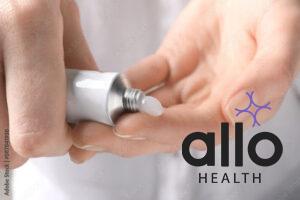
Proper application of any gel, spray or medication ensures safe and optimal results. Here’s a step-by-step guide on how to apply Lignocaine Hydrochloride Gel:
Clean Hands: Wash your hands thoroughly with soap and water before handling the gel to prevent contamination.
Identify the Affected Area: Determine the precise location of the pain or discomfort that requires treatment with the gel.
Dosage: Check the product label or follow the healthcare provider’s instructions to determine the appropriate amount of gel needed.
Apply the Gel: Gently squeeze the required amount of gel onto your clean fingertip. Spread the gel evenly over the affected area in a thin layer. Avoid rubbing it vigorously, as this may cause irritation.
Rubbing In: Gently massage the gel into the skin until it is absorbed. Make sure the gel covers the entire area of pain or irritation.
Avoid Contact with Eyes and Broken Skin: Be cautious to avoid accidental contact with the eyes or open wounds, as it may cause irritation. If contact occurs, rinse the area with water immediately.
Wait for Onset of Action: The gel may take a few minutes to start working and provide pain relief. Be patient and allow sufficient time for the numbing effect to take place.
Reapplication (If Necessary): Depending on the severity of pain or duration of the procedure, reapplication of the gel may be necessary. Follow the recommended dosage and wait time between applications.
Precautions and Considerations
- Some individuals may experience application site reactions, such as redness, itching, or swelling. If such reactions occur, discontinue use and seek medical advice.
- Lignocaine gel is intended for external use only. Ensure that it does not come into contact with the mouth or ingested accidentally.
- The gel works by blocking nerve signals, providing localized pain relief. Avoid using excessive amounts on large areas of the body to prevent systemic absorption and potential side effects.
- Inform your healthcare provider about any other medications, including nonprescription drugs and medicines for heart rhythm, to avoid potential drug interactions.
Dosage and Frequency of Lignocaine Hydrochloride Gel Usage
The dosage and frequency of Lignocaine Hydrochloride Gel usage can vary based on the specific condition being treated, the concentration of the gel, and individual factors. It is essential to follow the instructions provided by healthcare professionals or the product’s label for safe and effective use. Here are some general guidelines:
Dosage
Amount: The appropriate amount of gel to apply depends on the size of the affected area. Typically, a thin layer of gel should be spread evenly over the painful or irritated area.
Concentration: Lignocaine Hydrochloride Gel is available in various concentrations. The concentration will determine the strength of the analgesic effect. Always use the concentration recommended by your healthcare provider or as indicated on the product label.
Age and Health Status: Dosage may vary based on age and underlying health conditions. Children, the elderly, and individuals with certain medical conditions may require different dosages. Always consult a healthcare professional before using the gel, especially for children or those with specific health concerns.
Frequency
Short-term Use: Lignocaine Hydrochloride Gel is typically intended for short-term use. It is used as needed for localized pain relief and should not be used continuously for extended periods without medical supervision.
Wait Time Between Applications: Depending on the severity of pain and the recommended dosage, there may be specific wait times between gel applications. Follow the healthcare provider’s instructions or product label guidelines regarding reapplication.
Avoid Excessive Use: It is essential not to overuse the gel, especially over large areas of the body, to prevent systemic absorption and potential side effects.
Medical Procedures: For use before medical procedures, such as vaccinations or blood draws, the gel should be applied according to the instructions provided by the healthcare professional performing the procedure.
Side effects of Using Lignocaine Hydrochloride Gel for Pain Relief
Lignocaine hydrochloride gel, like any medication, may cause potential side effects. While it is generally safe when used as directed, some individuals may experience adverse reactions.
Common side effects of using Lignocaine Hydrochloride Gel for pain relief may include:
Application Site Reactions: Some people may experience redness, itching, or mild irritation at the site of application. This is generally temporary and should resolve on its own.
Allergic Reactions: In rare cases, individuals may be allergic to lignocaine or other components of the gel. Allergic reactions can manifest as skin rashes, hives, swelling, or difficulty breathing. Seek immediate medical attention if any signs of an allergic reaction occur.
Systemic Absorption: Excessive or prolonged use of the gel over a large area of the body may lead to systemic absorption of lignocaine. This can cause systemic side effects such as dizziness, drowsiness, lightheadedness, or changes in heart rate. It is important not to overuse the gel and to follow recommended dosages.
Contact Dermatitis: Some individuals may develop contact dermatitis, which is an inflammation of the skin due to contact with the gel. If you notice increased redness, swelling, or itching at the application site, discontinue use and consult a healthcare professional.
Nerve Damage: Although rare, excessive use of lignocaine gel may lead to nerve damage in the affected area. This is more likely to occur if the gel is used on broken or damaged skin.
Vision Problems: If the gel accidentally comes into contact with the eyes, it may cause temporary vision problems or eye irritation. Rinse the eyes with water immediately and seek medical attention if needed.
Drug Interactions: Lignocaine gel may interact with certain medications, especially those used to treat heart rhythm disorders or other local anesthetics. Inform your healthcare provider about any medications you are taking to avoid potential interactions.
It is essential to use Lignocaine Hydrochloride Gel under proper medical advice and follow the recommended guidelines. If you experience any unexpected or severe side effects, discontinue use and seek medical attention promptly.
Precautions To Take When Using Lignocaine Hydrochloride Gel
Individuals who are sensitive or allergic to Lidocaine Gel should avoid using it. Pregnant and breastfeeding women should consult with their doctor before using Lignocaine Hydrochloride Gel. If you have any underlying medical conditions, it is important to inform your doctor before use.
It is important to note that Lignocaine Hydrochloride Gel should not be applied to broken or damaged skin. If you experience any adverse reactions such as itching, swelling, or difficulty breathing, discontinue use immediately and seek medical attention. Keep the gel out of reach of children and store it in a cool, dry place away from direct sunlight.
Lignocaine Hydrochloride Gel And Sexual Health
Lignocaine Hydrochloride Gel, commonly known as Lidocaine Hydrochloride Gel, is not only used for pain relief but also has potential applications in the realm of sexual health.
This topical medication possesses local anesthetic properties that can be beneficial in addressing certain sexual health concerns. How? Lets explore.
Enhancing Sexual Pleasure: Lignocaine Hydrochloride Gel can be used to increase sexual pleasure by reducing sensitivity in certain areas. When applied to the penis or clitoral region, the gel can temporarily desensitize nerve endings, potentially delaying ejaculation in men and reducing hypersensitivity in women, leading to a more enjoyable sexual experience for both partners.
Managing Premature Ejaculation: Premature ejaculation is a common sexual health concern among men. Lignocaine Hydrochloride Gel can be prescribed by healthcare professionals to manage this condition. By numbing the penis, the gel helps in delaying ejaculation, allowing individuals to have better control over their sexual response.
Pain Relief during Intercourse: Some individuals may experience pain or discomfort during sexual intercourse, often attributed to conditions like vulvodynia, vaginismus, or other underlying factors. Lignocaine Hydrochloride Gel can be used to alleviate pain in the vaginal area by numbing the sensitive tissues, enabling more comfortable and enjoyable intercourse.
Addressing Foreskin Irritation: For men experiencing foreskin irritation or hypersensitivity, applying Lignocaine Hydrochloride Gel can provide relief and reduce discomfort during sexual activities.
However, this gel should be used under proper medical guidance, and any underlying health conditions should be addressed. Open communication between partners is crucial when incorporating this gel into sexual activities. By following safety considerations and consulting healthcare professionals, individuals can explore the potential benefits of Lignocaine Hydrochloride Gel in improving their sexual health and well-being.
Frequently Asked Questions
Q: How long does the numbing effect of Lignocaine Hydrochloride Gel last?
A: The duration of the numbing effect varies based on the concentration of the gel and individual response. Typically, it provides pain relief for a limited duration, making it suitable for short-term use and minor medical procedures.
Q: Can I use Lignocaine Hydrochloride Gel on open wounds or broken skin?
A: No, Lignocaine Hydrochloride Gel should not be used on open wounds or broken skin. It is meant for intact skin application only. Using it on damaged skin may increase the risk of systemic absorption and potential adverse effects.
Q: Can Lignocaine Hydrochloride Gel interact with other medications?
A: Yes, Lignocaine Hydrochloride Gel may interact with certain medications, especially those used for heart rhythm disorders or other local anesthetics. Inform your healthcare provider about all medications you are taking to avoid potential interactions.
Q: Can children and the elderly use Lignocaine Hydrochloride Gel?
A: Children and the elderly can use Lignocaine Hydrochloride Gel, but specific dosages and usage instructions may differ based on individual factors. Consult a healthcare professional before using the gel for these age groups.
Q: Can I use Lignocaine Hydrochloride Gel during pregnancy or while breastfeeding?
A: It is advisable to consult a healthcare professional before using Lignocaine Hydrochloride Gel during pregnancy or while breastfeeding to ensure safety for both the mother and the baby.
Q: Is Lignocaine Hydrochloride Gel available over-the-counter?
A: Depending on the country and regulations, some formulations of Lignocaine Hydrochloride Gel may be available over-the-counter. However, higher concentrations or specific medical uses may require a prescription from a healthcare professional.
Q: Can I use Lignocaine Hydrochloride Gel on my pets?
A: Lignocaine Hydrochloride Gel is meant for human use only and should not be used on pets. Consult a veterinarian for suitable pain relief options for animals.
Q: How should I store Lignocaine Hydrochloride Gel?
A: Store Lignocaine Hydrochloride Gel at room temperature, away from direct sunlight, heat, and moisture. Keep it out of reach of children and pets. Check the product label for specific storage instructions.

